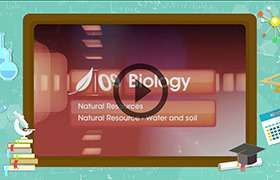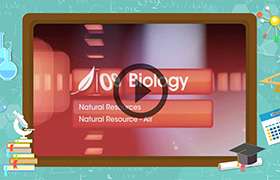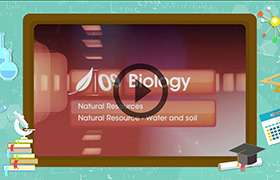CBSE Class 9 Answered
The nitrogen cycle is one of the most important nutrient cycles found in terrestrial ecosystems. Nitrogen is used by living organisms to produce a number of complex organic molecules like amino acids, proteins, and nucleic acids. The store of nitrogen found in the atmosphere, where it exists as a gas (mainly N2), plays an important role for life. Other major stores of nitrogen include organic matter in soil and the oceans.
Despite its abundance in the atmosphere, nitrogen is often the most limiting nutrient for plant growth. This problem occurs because most plants can only take up nitrogen in two solid forms: ammonium ion (NH4+ ) and the ion nitrate (NO3- ).
Significant amounts of nitrogen enter the soil in rainfall through the effects of lightning. The majority, however, is biochemically fixed within the soil by specialized micro-organisms like bacteria, actinomycetes, and cyanobacteria. Members of the bean family (legumes) and some other kinds of plants form mutualistic symbiotic relationships with nitrogen fixing bacteria. In exchange for some nitrogen, the bacteria receive from the plants carbohydrates and special structures (nodules) in roots where they can exist in a moist environment.
In most ecosystems nitrogen is primarily stored in living and dead organic matter. This organic nitrogen is converted into inorganic forms when it re-enters the biogeochemical cycle via decomposition. Decomposers, found in the upper soil layer, chemically modify the nitrogen found in organic matter from ammonia (NH3 ) to ammonium salts (NH4+ ). This process is known as mineralization and it is carried out by a variety of bacteria, actinomycetes, and fungi.
Nitrogen in the form of ammonium is normally held by soil colloids. When released, most of the ammonium is often chemically altered by a specific type of bacteria that belong to the genus Nitrosomonas into nitrite (NO2- ). Further modification by another type of bacteria (belonging to the genus Nitrobacter) converts the nitrite to nitrate (NO3- ). Both of these processes involve chemical oxidation and are known as nitrification. However, nitrate is very soluble and it is easily lost from the soil system by leaching. Some of this leached nitrate flows through the hydrologic system until it reaches the oceans where it can be returned to the atmosphere by denitrification. The process of denitrification involves the metabolic reduction of nitrate (NO3- ) into nitrogen (N2) or nitrous oxide (N2O) gas. Both of these gases then diffuse into the atmosphere.
The figure for nitrogen cycle can be taken from the following site:











